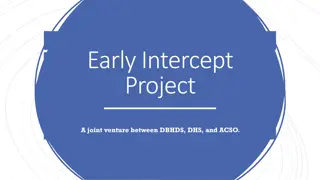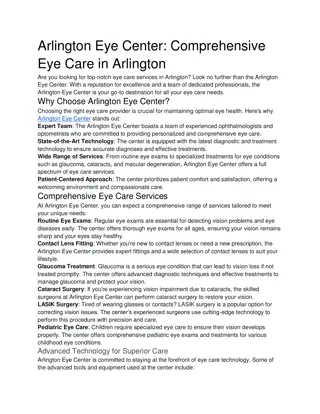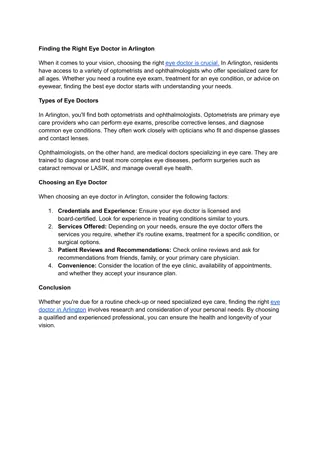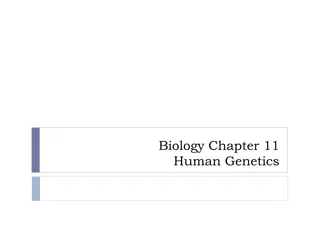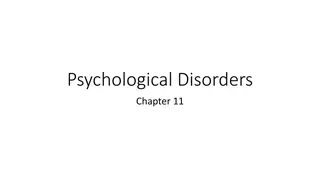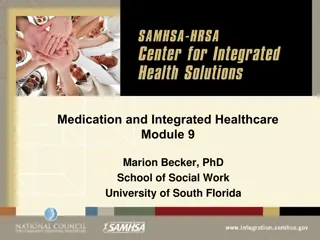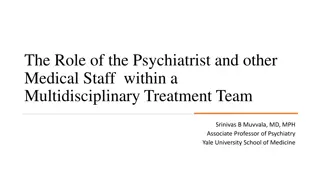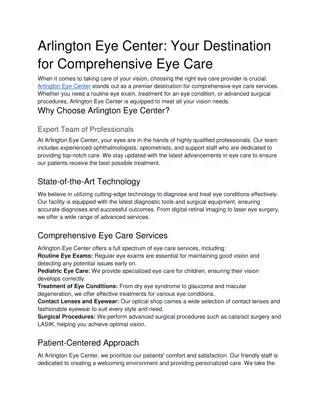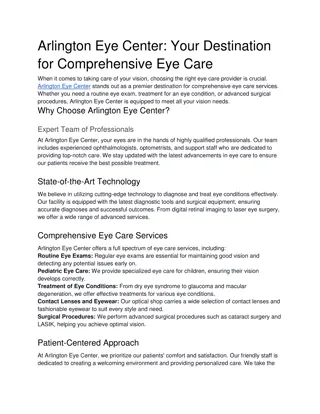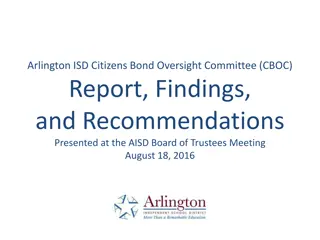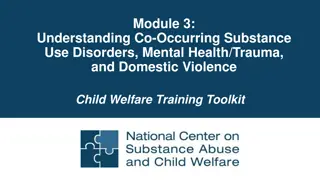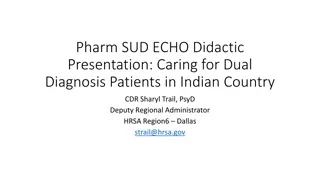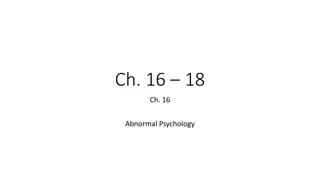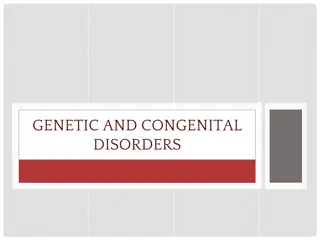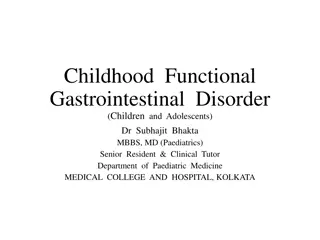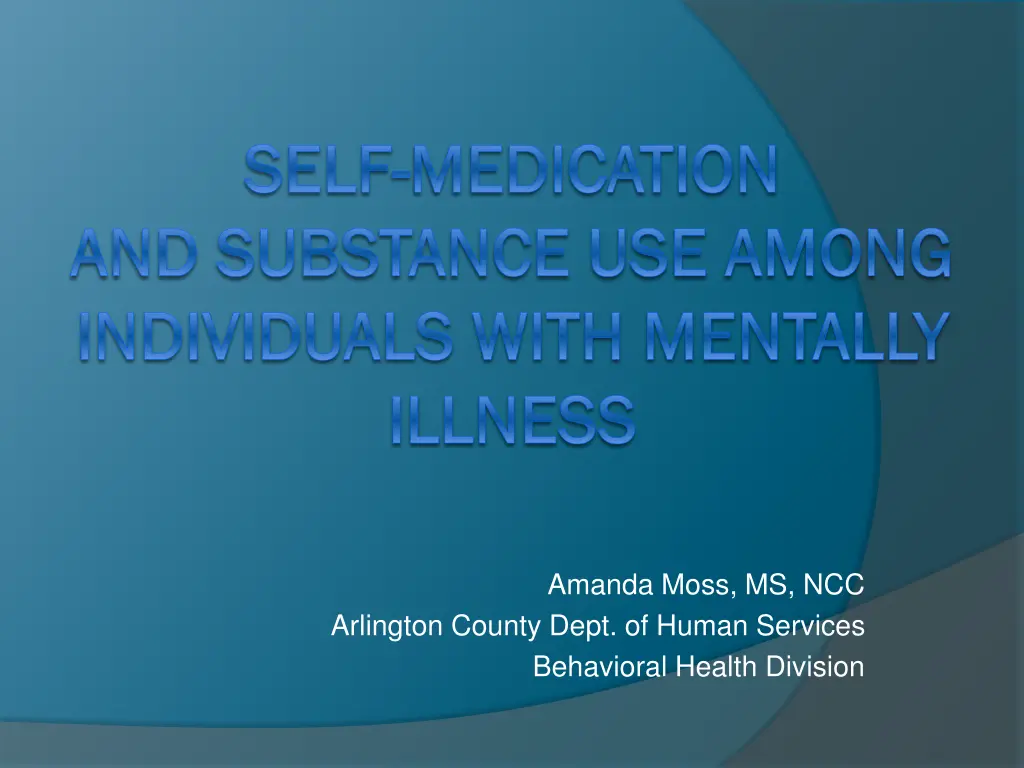
Understanding Self-Medication and Substance Use Among Individuals with Mental Illness
Explore the relationship between self-medication and substance use among individuals with mental illness, including recognizing dually diagnosed individuals, understanding reasons for self-medication, and strategies for assisting this population. Gain insights into mental illnesses, DSM-IV-TR axes, clinical disorders, and the correlation between substance use and mental illness.
Download Presentation

Please find below an Image/Link to download the presentation.
The content on the website is provided AS IS for your information and personal use only. It may not be sold, licensed, or shared on other websites without obtaining consent from the author. If you encounter any issues during the download, it is possible that the publisher has removed the file from their server.
You are allowed to download the files provided on this website for personal or commercial use, subject to the condition that they are used lawfully. All files are the property of their respective owners.
The content on the website is provided AS IS for your information and personal use only. It may not be sold, licensed, or shared on other websites without obtaining consent from the author.
E N D
Presentation Transcript
SELF SELF- -MEDICATION MEDICATION AND SUBSTANCE USE AMONG AND SUBSTANCE USE AMONG INDIVIDUALS WITH MENTALLY INDIVIDUALS WITH MENTALLY ILLNESS ILLNESS Amanda Moss, MS, NCC Arlington County Dept. of Human Services Behavioral Health Division
Objectives Recognizing someone who is dually diagnosed Understanding the reasons for self- medication among the mentally ill Strategies and guidance for officers encountering persons of this population, to better assist and/or manage these individuals safely
What is Mental Illness? Definition - Any of various conditions characterized by impairment of an individual's normal cognitive, emotional, or behavioral functioning. Mental illnesses are described in the Diagnostic and Statistical Manual of Mental Disorders, 4thed., Text Revision (DSM-IV-TR) Multiaxial Assessment assessment in several domains of information Facilitates comprehensive and systematic evaluation of patient/client as a whole American Psychiatric Association: Diagnostic and Statistical Manual of Mental Disorders, Fourth Edition, Text Revision. Washington, DC, American Psychiatric Association, 2000.
The Five DSM-IV-TR Axes Axis I Clinical Disorders and Other Disorders That May Be A Focus of Clinical Attention Axis II Personality Disorders and Mental Retardation Axis III General Medical Conditions Axis IV Psychosocial and Environmental Problems Axis V Global Assessment of Functioning (GAF) American Psychiatric Association: Diagnostic and Statistical Manual of Mental Disorders, Fourth Edition, Text Revision. Washington, DC, American Psychiatric Association, 2000.
Axis I Clinical Disorders Several categories of Axis I disorders, but of particular interest to us are: Delirium, Dementia, and Amnestic or Cognitive Disorders Substance-Related Disorders Schizophrenia and Other Psychotic Disorders Mood Disorders Impulse Control Disorders American Psychiatric Association: Diagnostic and Statistical Manual of Mental Disorders, Fourth Edition, Text Revision. Washington, DC, American Psychiatric Association, 2000.
Substance Use as Mental Illness Substance DEPENDENCE a maladaptive pattern of substance use, leading directly to clinically significant impairment or distress. Key features are: Tolerance need more substance to produce same effect Compulsion great deal of time and energy spent in obtaining the substance, using it, or recovering from its effects Withdrawal classic physiological symptoms associated with the particular substance, or the use of the substance to relieve or avoid withdrawal symptoms Substance ABUSE - a maladaptive pattern of substance use, leading directly to clinically significant impairment or distress. Key feature is continued, recurrent use despite: Failure to fulfill major role obligations at work, home, or school Legal problems Persistent or recurrent social or interpersonal problems caused or exacerbated by the effects of the substance American Psychiatric Association: Diagnostic and Statistical Manual of Mental Disorders, Fourth Edition, Text Revision. Washington, DC, American Psychiatric Association, 2000.
Specific Substances Addressed in the DSM-IV-TR Alcohol Amphetamine (or amphetamine-like) Cannabis Cocaine Hallucinogens Inhalants Opioids Phenylcyclidine (PCP) Sedatives, Hypnotics, Anxiolytics and the two most commonly used and abused substances in the world: CAFFEINE and NICOTINE
Dual Diagnosis (AKA Co-occurring Disorders) Individuals who have BOTH: A substance-related diagnosis AND A non-substance- related diagnosis One-third of people with serious mental illnesses will, at some point in their lives, evince a co-occurring substance use disorder
So Which Is It? It is often difficult (and somewhat arbitrary) to determine which diagnosis is the principal diagnosis . . . For example, it may be unclear which diagnosis should be considered principal for an individual hospitalized with both Schizophrenia and Amphetamine Intoxication, because each condition may have contributed equally to the need for admission and treatment. (DSM-IV-TR)
Why Use Drugs? If a person is already mentally ill, which by definition means their cognitive, emotional, and behavioral functioning is impaired to a point that it causes problems for the individual or others . . . what s the appeal?
Quotes from People with Bipolar Disorder I self-medicated with alcohol for more than 30 years and became addicted to prescription painkillers for about 10 years in a foolish attempt to gain enough control so that I could manage to keep working. The self-medication became the only way, over time, that I could manage to sleep or remain in control enough to function. In my past, before being diagnosed with bipolar disorder, I tried everything available to alter my mood - cocaine, crystal meth, ecstasy, LSD, mushrooms, pot, crack, alcohol. I went through years of drinking and using illegal drugs. When I would get so disgusted with myself, I'd try to stop. At that time I'd be interested in seeing a therapist and [psychiatrist]. With the meds I'm on now, I have no desire to get so loaded I can't breathe. BUT I have found I smoke more pot that I ever did. It helps calm me down when I get too manic-y.
Reasons for Substance Use by Mentally Ill Persons Self-medication Theory suggests that people with severe mental illnesses misuse substances in order to relieve a specific set of symptoms and counter the negative side-effects of antipsychotic medication. Alleviation Of Dysphoria Theory suggests that people with severe mental illness commonly feel bad about themselves and that this makes them vulnerable to using psychoactive substances to alleviate these feelings. Multiple Risk Factor Theory suggests that there may be risk factors that can lead to both substance abuse and mental illness. These factors include: social isolation, poverty, lack of structured daily activity, lack of adult role responsibility, living in areas with high drug availability, and association with people who already misuse drugs. Other evidence suggests that traumatic life events such as sexual abuse, are associated with the development of psychiatric problems and substance abuse. The Supersensitivity Theory proposes that certain individuals who have severe mental illness also have biological and psychological vulnerabilities, caused by genetic and early environmental life events. Retrieved 7/29/11 from: http://www.servinghistory.com/topics/dual_diagnosis::sub::Theories_Of_Dual_Diagnosis
The Problem Mental illnesses and substance intoxication can very closely mimic one another, and it is extremely difficult to tell the difference in community settings Opioid or sedative intoxication can resemble depression, dementia, or schizophrenia Amphetamine or cocaine intoxication can resemble anxiety, panic attacks, mania and hypomania Hallucinogen intoxication can resemble schizophrenia, delusional disorder, or dementia A general rule of thumb is that symptoms caused by acute substance intoxication are time-limited, where symptoms caused by mental illness are persistent
Approach and Handling OFFICER SAFETY IS THE FIRST PRIORITY!!!!!!!!!!!!!!!!!!!!!!!!!! Look/listen/smell for physical signs of intoxication: Inappropriately dressed for weather Balance and coordination impairment Bloodshot, glassy eyes (THC) Pupil size large for stimulants, small for opiates and depressants Odors bad breath, alcohol, marijuana, urine Visible injection marks Tremors Unclear speech (slurred, incoherent, or too rapid) Excessively sweaty or dry skin Pay attention to nonverbal cues and signs as sources of information
Approach and Handling Indicators of mental illness Appears to be responding to hallucinations conversations with people not present, looking away or over shoulder, or at a specific spot repeatedly or for extended periods Loud, expansive speech and gestures may be a person experiencing a manic state Disjointed speech, rapidly switching topics with no segue, tangential speech can indicate psychosis Disheveled appearance but otherwise appropriately dressed for environment Carrying a plastic bag from a pharmacy, or has prescription bottles on them
What To Do With Dual-Diagnosed Persons? Arrest and detention procedures are no different with this population Be patient and calm anxiety and frustration is contagious, and could precipitate violence Go slow and speak clearly. Use short sentences or directions, and ask specific questions Avoid sudden movements and, when possible, stay within the field of vision (at a safe distance) of the individual Ask questions of the individual, and corroborate whenever possible with a reliable source Be respectful and reassuring. Use the person s name to establish a connection and build trust
Gather as Much Information As You Can, When You Can Differentiating between substance-induced disorder and a psychiatric disorder may be aided by the following: Time of onset: If symptoms began prior to substance use, it is most likely a psychiatric disorder. Consistency of symptoms: Symptoms more exaggerated than one would expect with a particular substance type and dose most likely amounts to a psychiatric disorder. Family history: A family history of mental illness may indicate a psychiatric disorder. Client's stated reason for substance use: Those with a primary psychiatric diagnosis and secondary substance use disorder will often indicate they "medicate symptoms," for example, drink to dispel auditory hallucinations, use stimulants to combat depression, use depressants to reduce anxiety or soothe a manic phase. Remember that the individuals themselves may be unreliable sources of information, so interview family, friends, associates, etc. whenever possible
A Neat Street Trick for a Person Acting or Speaking Bizarrely The palm test helps determine whether a person acting bizarrely may be under the influence of a hallucinogen (LSD) or PCP, or experiencing psychotic symptoms Hold your hand palm out and ask the subject to list the colors they see there People on LSD will rattle off a list of colors, where people on PCP will ignore or dismiss the request, and may become agitated or assaultive People experiencing hallucinations or other psychotic disorders generally deny seeing anything
Violence and the Mentally Ill Mentally ill people are, on average, no more prone to violence than the general population Of violence-prone mentally ill persons, those with mood disorders (especially depression and bipolar disorder) and/or antisocial personality disorder were more prone to violence Concurrent substance use multiplies the risk of violence by mentally ill individuals 2-3 times Other risk factors for violence in dually- diagnosed individuals include: young age, male, poor, less educated
Resources for Information and Assistance Arlington Behavioral Health Division Emergency Services Available 24/7 703-228-5160 VHC Emergency Department

